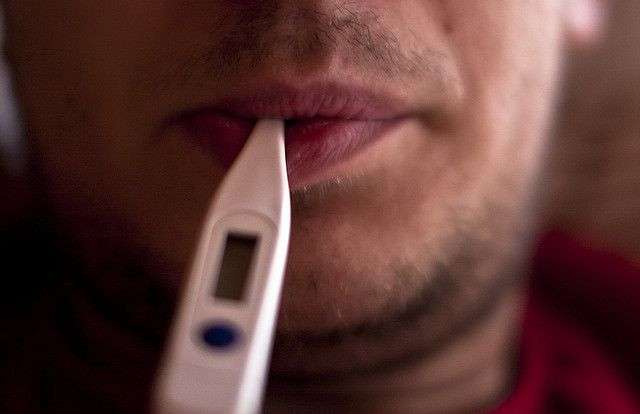Battle Of The Sexes: Female Sex Hormone Weakens Flu Virus For Women, Not Men

A sick man’s pain, aches, and groans might be thought of as nothing more than incessant whining, a phenomenon known as "man flu." However, a recent study has uncovered men are the weaker sex when it comes to health.
It's well-known the immune system is influenced by sex hormones. The female sex hormone, estrogen, tends to increase inflammation, while the male hormone, testosterone, decreases it. Men are also more likely to get infections while women tend to have better responses to vaccines.
With the current study, a team from Johns Hopkins University found estrogen has antiviral effects against the influenza A virus, more simply known as the flu. These effects could actually protect women from the more aggressive symptoms of the illness, and may even be harnessed to help treat people suffering from it on a broader scale.
“We see clinical potential in the finding that therapeutic estrogens that are used for treating infertility and menopause may also protect against the flu," said Sabra Klein, lead author of John Hopkins, in a press release.
For the study, Klein and her colleagues sought to examine how estrogen affected the flu virus's ability to replicate. A virus like the flu makes people sick when it invades the body and enters cells, which it subsequently uses to replicate. When the virus is released from the infected cells, it spreads throughout the body, and eventually between people from sneezing and coughing. The extent to which the virus replicates determines its severity.
The researchers tested various forms of estrogen on nasal cells from both male and female donors — nasal cells are mainly affected by influenza A. They exposed the cell cultures to the virus, estrogen; the environmental estrogen, bisphenol A; and selective estrogen receptor modules (SERM), compounds typically used in hormone therapy that act like estrogen.
The findings revealed estrogen, a SERM compound called raloxifene, and bisphenol A reduced flu virus replication in nasal cells from women but not men. The estrogen compounds were able to spread their antiviral effects through a protein structure called estrogen receptor beta, which binds with other molecules to promote cell response — acting sort of like a gatekeeper.
Estrogen’s antiviral effects came as no surprise to the researchers or the rest of the scientific community. In a previous study, estrogen was injected into a small group of female monkeys, and subsequently produced a thicker layer of cells in their vaginas. This acted as a protective barrier against infection when simian HIV (simian immunodeficiency virus, or SIV) was squirted into their vaginas. (Researchers believe this could be a valuable model to help protect against HIV in women.)
The current study builds on these findings, and according to Klein, it is the first to identify the estrogen receptor responsible for estrogen’s antiviral effects. As promising as the findings are, estrogen’s protective effects may be limited when it comes to the general population. In premenopausal women, for example, estrogen levels fluctuate. However, women who are on certain kinds of birth control, or who are post-menopausal and taking hormone replacements, may be better protected during seasonal flu epidemics.
Sources: Peretz J, Pekosz A, Lane AP et al. Estrogenic compounds reduce influenza A virus replication in primary human nasal epithelial cells derived from female, but not male, donors. American Journal of Physiology - Lung Cellular and Molecular Physiology. 2015.
Smith SM, Baskin GB, and M PA. Estrogen Protects against Vaginal Transmission of Simian Immunodeficiency Virus. The Journal of Infectious Diseases. 2000.



























